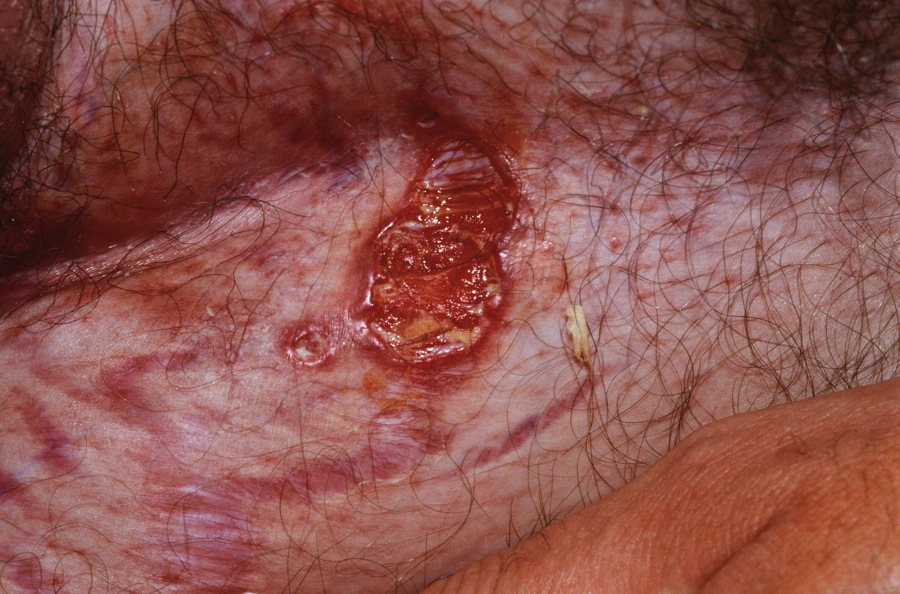
Striae are common on the low back of teenage boys due to their pubertal growth spirt. Here in a 14-year-old boy.
Striae Distensae (SD) are linear red lesions of the skin that occur when the skin stretches to the point of tearing. They are common on the back of teenagers during growth spurts. (Note: stria is singular; striae is plural).
SD present as linear atrophic lesions, and commonly develop in adolescence, in pregnancy and during times of rapid growth or weight gain. They may also be associated with exogenous steroid use and Marfan's syndrome. When new, they are pink or red. After a time, they turn white.
Transverse, atrophic, red, violaceous or white lines running across the lumbosacral area are common manifestations in men of striae distensae or stretch marks and have an incidence of approximately 5%. They develop in adolescence and are strongly correlated with a rapid growth spurt, tall stature, and a family history of SD.
Long term use of corticosteroids can lead to ulceration of stria. Bevacizumab is a commonly used medication to treat glioblastoma multiforme, often in conjunction with systemic steroids. Bevacizumab has been associated with the development of ulceration of corticosteroid-induced striae. Bevacizumab has also been associated with delayed wound healing and hand-foot syndrome.
The vast majority of stria are benign/physiologic, due to growth during puberty or pregnancy. However, in the situation of unusually severe disease, one can consider Cushing's syndrome and exogenous steroid use.

Clobetasol-induced striae with ulcers. Continued use of a strong topical steroid can lead to atrophy, striae and ultimately ulcers.
Who is Dr. White? | Privacy Policy | FAQs | Use of Images | Contact Dr. White